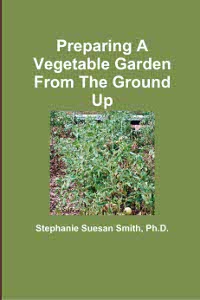
Hans / Pixabay
Growing peppers is easy if you pick the peppers that are adapted to your area and follow a few simple steps. First, you have to decide if you want hot peppers or sweet peppers. Many people grow some of each. Care must be taken to separate the plants enough to avoid cross pollination, because that will make your sweet peppers hot.
Hot peppers include things like the habanero, the Hungarian Wax, the Jalapeno, the Long Red Cayenne, and the TAM Mild Jalapeno. The habanero has a reputation for being the hottest pepper, scoring around 200,000-300,000 Scoville Units. It is not actually the hottest pepper, as the Bhut Jolokia of Asia hits 1,001,304 Scoville Units. However, the habanero will scorch your mouth pretty good if you bite into it. The Jalapeno is rated at 2,5000 – 8,000 units, while the TAM Mild Jalapeno is bred to taste the same but have less heat. It is a good compromise if you have heat lovers and sweet pepper lovers in the same household.
Sweet peppers include a wide variety of bell peppers, pimento peppers, and non-bell sweet peppers such as the banana pepper. There are even mini bells that are two bites big and very expensive at the grocery store. Your county extension agent will have a list of cultivars that grow well in your area.
The next big decision is whether to start your peppers from seed or buy transplants. Starting from seed is harder. Buying trasnplants usually gets you a plant adapted for your area if the store is near your house. You can mail order transplants as well, but they are fairly expensive. The one drawback of buying transplants is the selection is usually limited to common hybrids. If you want open pollinated plants or an uncommon variety, you will have to start from seed.
Peppers need full sun and a well drained soil. You will need to work the soil a couple of months before it is time to plant the transplants. Break up big clods and incorporate compost into the soil.
When buying transplants, buy plants that are 4 to 6 inches tall. Three or four hot peppers and eight to ten sweet peppers will feed a family of four. Make sure all danger of frost is past before planting as peppers do not tolerate cold.
Planting your peppers. Make your holes three to four inches deep and about one and a half feet apart in a row. Fill the holes with water and let it soak in before planting the pepper. Take the pepper from the flat, slide it out of the pot, and put it on the hole. Fill in the dirt but do not pack it hard. Leave a depression around the pepper to hold water. If possible, transplant on a cloudy day or in the evening. Finally, water the plant in but do not leave it slushy with water.
Watering your peppers. Plants should be watered at least an inch a week. You may have to water them two or three times a week. Pepper plants should not be allowed to wilt because this will reduce fruit yield. However, they should not be kept too wet, either, as this fosters disease. Make sure you do not get the leaves wet, either.
Fertilize the plant after the fruit starts to swell. Take two tablespoons of fertilizer and spread it around each plant at a distance of about six inches from the stem. Water the plant after fertilizing. This will help it produce more and better fruit.
There are insects that get on peppers, especially flea beetles, leaf miners, and aphids. Before using any insecticide, make sure you read the label and that peppers are one of the plants it can be used on. Obey the waiting period after treatment before eating the fruit.
If you pick peppers as they ripen, you will have more fruit. They keep about three to five days in the refrigerator.
 For more help gardening, buy my book, Preparing A Vegetable Garden From The Ground Up
For more help gardening, buy my book, Preparing A Vegetable Garden From The Ground Up
Available in print or ebook from Amazon.com or other retailers, this book walks you from choosing the site of your garden all the way through what to do after the harvest. Buy a copy for yourself or a friend today!


Trackbacks/Pingbacks